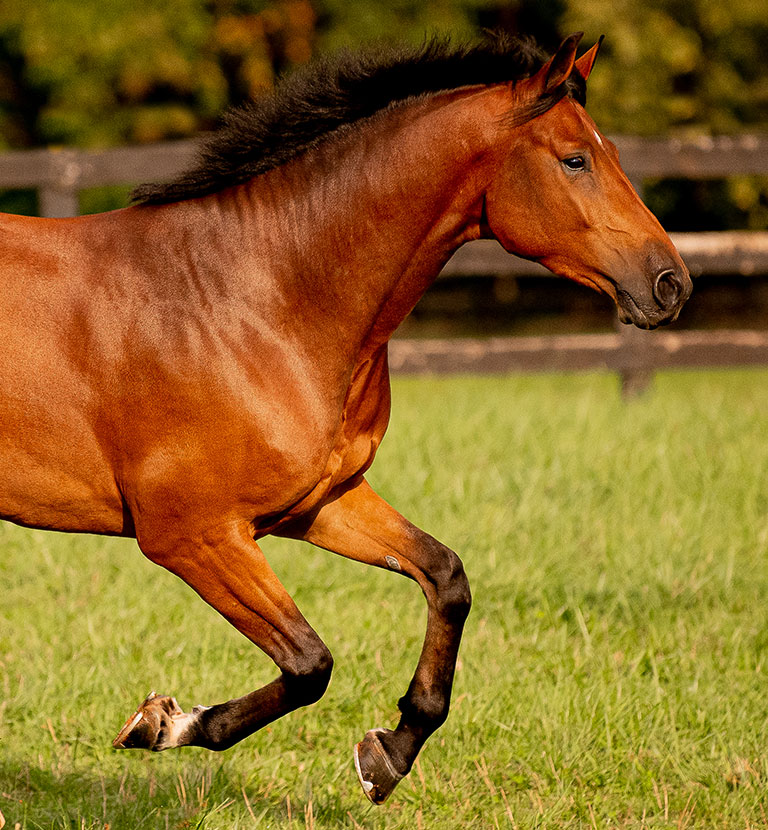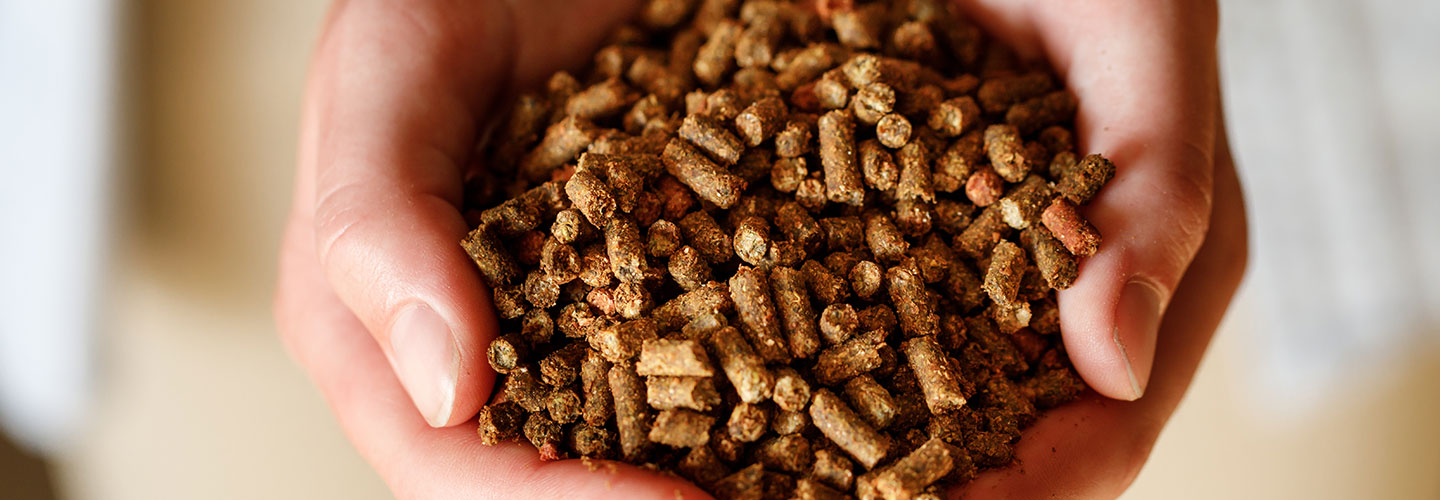Horse Feed FAQs
Click on a question below to display the answer. Don’t see the question you are looking for? Visit the Contact Us page to submit your question!
Feed Freshness
-
How can I tell how fresh my feed is?
Nutrena feed bags are marked on the tag with a code that indicates what day that bag of feed was produced on.
On the tag, look for “Lot:” followed by a series of numbers and/or letters. The first two digits (may be letters or numbers) indicate which plant made that product, and then there are 4 digits strung together – the first digit indicates the year, so anything made in 2016 would have a 6, anything after the 1st of 2017 has a 7. Then the next three numbers are called the “Julian Date Code” – these number the days of the year. So, Jan 1 is 001, Jan 2 is 002, and so on until December 31 is 365.
Example: WB6121 or 596121. These Lot codes would indicate product made in 2016, on the 121st day of the year, or May 1st.
The first day of each month corresponds with the following Julian Date code:
001 = Jan 1st
032 = Feb 1st
060 = March 1st
091 = April 1st
121 = May 1st
152 = June 1st
182 = July 1st
213 = Aug 1st
244 = Sept 1st
274 = Oct 1st
305 = Nov 1st
335 = Dec 1st
Product Selection
-
My horse is too fat. What product should I use?
Empower Topline Balance is Nutrena’s lowest calorie option and also has the lowest recommended feeding rates. Feeding rates and total feed intake need to be assessed. Increasing the exercise level for the horse is also a good idea.
-
My horse is too thin? What product should I use?
The first thing to do is to make certain the horse is healthy, has been de-wormed properly and has had good dental care. After that, make certain the horse is getting good quality hay and is being fed an appropriate amount, by weight, of the product being used.
ProForce Fuel or ProForce Fuel XF are excellent products for increased weight gain and are our highest calorie-per-pound feed. SafeChoice Senior and SafeChoice All Life Stages are also excellent product choices in our feed line-up for underweight or hard keepers.
If a top-dress supplement is desired, versus using a complete feed, Empower Boost high-fat rice bran is the product to use. At 22% fat, adding just 1-2 lbs per head per day can make a significant difference in adding weight.
If a horse weighs 1,000 lbs and should weigh 1,200 lbs, feeding rates can be moved up to at least the level of the desired weight of 1,200 lbs. A weight tape or the weight calculation method from heart girth and body length can be used to monitor weight. Estimating weight without measurement is not very accurate.
-
What can I feed miniature horses?
Miniature horses are generally fairly “easy keepers”. Empower Topline Balance and SafeChoice Special Care are our recommended feed for miniature horses.
-
When should a horse be switched over to a senior feed?
Age 15 has been used as a guideline, but there is a lot of individual variation based on dental care and early life health care. Signs that your horse is ready for a senior feed include loss of muscle condition, trouble keeping weight on with their current diet, and decrease in coat and skin condition quality. For horses having trouble chewing forage, SafeChoice Senior and ProForce Senior are a good options regardless of age.
-
When should I start my broodmare on a Mare & Foal feed?
Broodmares need to be on a quality maintenance diet, such as SafeChoice All Life Stages, for the first two trimesters of the pregnancy. The body structures of the foal are being developed through this time, and a quality nutritional program for the mare is critical to the health of the foal.
Around the beginning of the third trimester of the pregnancy, nutritional demands on the mare’s body begin to drastically increase – this is where the growth of the unborn foal begins to dramatically increase. A mare’s body will give nutrients to the developing foal, then what is left will go to the mare, so supporting her with a diet such as SafeChoice Mare & Foal, which is designed for just this time period, is ideal.
-
How long should my broodmare stay on a Mare & Foal feed?
Nutritional demands on a mare continue to be high through the first several weeks of lactation – when the foal is taking its total diet from her milk. Once the foal begins exploring other food options, such as creep feed and hay, and begins to not rely quite as much on his dam, then a broodmare can be switched back to a nutrition program that still provides quality nutrition, but not quite at the high levels found in a Mare & Foal feed. Also, foals can creep feed on a Mare & Foal feed to begin their journey in to being fed regularly along with the mare.
Health & Management
-
What feed do you recommend for a horse with Insulin Resistance or Cushing’s syndrome?
For a metabolic horse that is overweight or an easy keeper, we recommend Empower Topline Balance. For an underweight metabolic horse or harder keeper, we recommend SafeChoice Special Care or SafeChoice Senior Molasses Free.
-
My horse has laminitis. What should I feed?
First, restrict access to lush pasture using a grazing muzzle if needed. If your horse is an easy keeper or overweight, you can feed Empower Topline Balance. If your horse is being worked or needs additional calories to maintain weight, we suggest feeding SafeChoice Special Care or SafeChoice Senior Molasses Free.
-
Can I use regular horse feeds for donkeys or mules?
Yes, they have similar requirements. Donkeys and mules seem to be a little more efficient than horses, so they may require the lower feeding rates.
-
What are amino acids and why are they important?
Amino acids are the building blocks of protein and indicate the quality of the protein sources in a feed. Horses cannot synthesize all of the amino acids. Lysine, methionine and threonine are the first limiting amino acids. If they are deficient, the horse cannot make full use of the protein for hair coat, hoof growth and muscle development.
All Nutrena premium horse feeds including ProForce, SafeChoice, and Empower Topline Balance contain optimum levels of amino acids for ideal muscle development and maintenance.
-
Why is there a range of recommended feeding rates for different products?
Horses vary quite a bit in how much they need to eat to maintain body condition. It is always a good idea to start at the low end of the feeding rate and increase to the required level.
-
Why do I need to offer salt free choice if there is already salt in the feed?
Salt intakes may vary by temperature, humidity and exercise level. Horses will regulate their salt intake if it is available at all times and may require more salt than can be included in a feed due to palatability. Salt consumption is important to maintaining the horse’s water consumption as well.
-
If I work my horse hard on a weekend, should I increase the feeding rate?
Horses do best with relatively constant feeding rates. If a horse is being worked hard for a few days in a row, adding a third meal may be useful, but each meal should not be over 0.5% of bodyweight and should be at equal intervals.
-
My horse has a tendancy to experience digestive upset. What product is the best to feed them?
We recommend our SafeChoice line with Digestive Shield™ and ProForce now with Digestive Shield blend of pre + pro + postbiotics and calcite to support gut and immune health. If a top-dress supplement is desired, Empower Digestive Balance also supports digestive upset.
Get a FREE Consultation
Fill out our Contact Us form for an equine nutrition expert to provide 1-on-1 recommendations for your feeding program.


